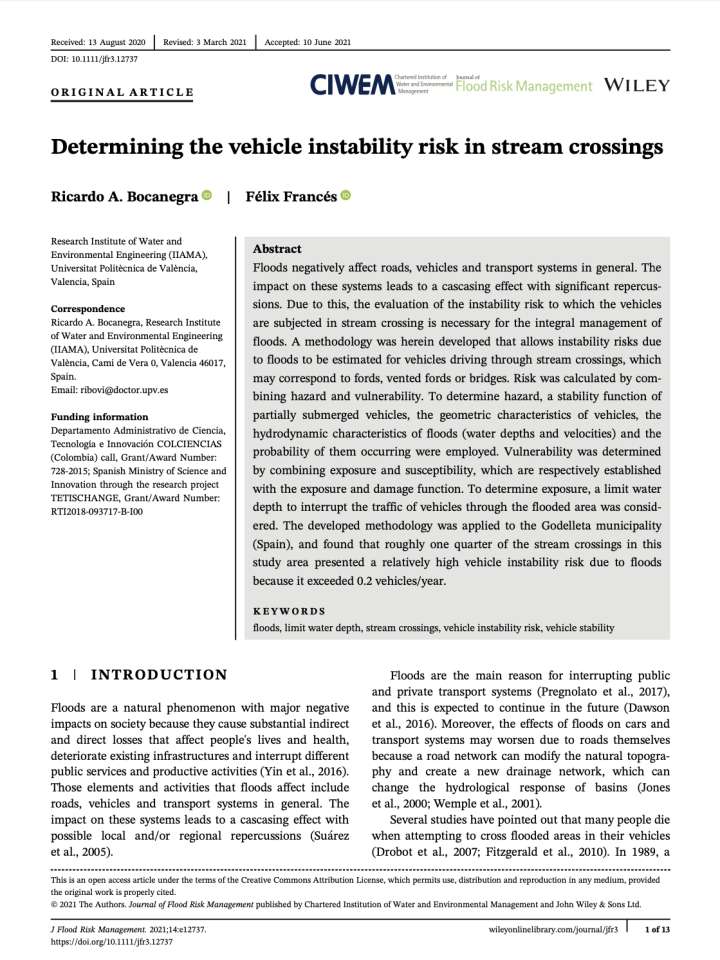Determining the vehicle instability risk in stream crossings
This paper determines the vehicle instability risk in stream crossings. Floods negatively affect roads, vehicles and transport systems in general. The impact on these systems leads to a cascasing effect with significant repercussions. Due to this, the evaluation of the instability risk to which the vehicles are subjected in stream crossing is necessary for the integral management of floods. A methodology was herein developed that allows instability risks due to floods to be estimated for vehicles driving through stream crossings, which may correspond to fords, vented fords or bridges. Risk was calculated by combining hazard and vulnerability. To determine hazard, a stability function of partially submerged vehicles, the geometric characteristics of vehicles, the hydrodynamic characteristics of floods (water depths and velocities) and the probability of them occurring were employed. Vulnerability was determined by combining exposure and susceptibility, which are respectively established with the exposure and damage function. To determine exposure, a limit water depth to interrupt the traffic of vehicles through the flooded area was considered. The developed methodology was applied to the Godelleta municipality (Spain).
This paper finds that roughly one quarter of the stream crossings in this study area presented a relatively high vehicle instability risk due to floods because it exceeded 0.2 vehicles/year. The number of vehicles at risk for instability due to floods proved extremely sensitive to the magnitude of the limit water depth from which drivers would decide to stop driving through flooded zones. Therefore, determining a safe limit water depth, that is, one associated with a low risk level, can help to encourage drivers' good behaviour. Also, this risk can significantly increase according to the extent that vented fords are obstructed. To avoid this risk increasing, periodically performing maintenance tasks should minimise this possibility.
Explore further
